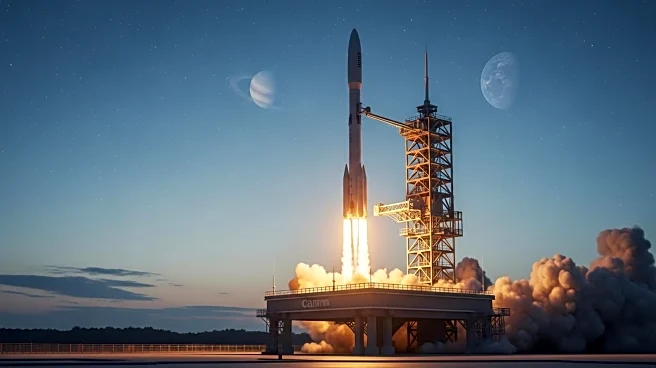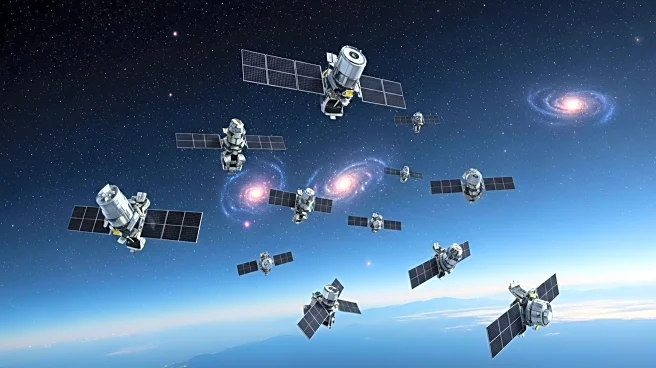What's Happening?
The American military spaceplane X-37B is set to test a quantum inertial sensor, a potential alternative to GPS, during its eighth mission scheduled for August 21, 2025. This experiment aims to revolutionize navigation technologies for spacecraft, aircraft, ships, and submarines. Traditional GPS systems face limitations such as signal loss beyond Earth's orbit or in environments with interference. The quantum inertial sensor uses atomic interferometry to achieve high precision in navigation by cooling atoms to near absolute zero, allowing them to behave like waves. This technology promises to provide reliable navigation in deep space, on the Moon, or on Mars, where GPS is unavailable.
Why It's Important?
The development of quantum navigation systems could significantly impact both military and civilian sectors. For military applications, these systems offer enhanced navigation resilience in GPS-denied environments, such as conflict zones where signals are jammed. For civilian use, the technology could benefit aircraft, ships, and submarines operating in areas where GPS is unreliable. The successful implementation of quantum navigation could lead to a paradigm shift in how autonomous missions are conducted, ensuring precision and reliability in challenging environments. This advancement also positions the U.S. at the forefront of quantum technology development, with potential implications for global aerospace and defense industries.
What's Next?
The X-37B mission will be the first large-scale test of quantum inertial navigation in space, moving the technology from theoretical research to practical application. If successful, this could pave the way for further integration of quantum navigation systems in various aerospace applications. The results of this mission, although potentially limited in public disclosure due to its military nature, could influence future research and development in quantum technologies. Stakeholders in the aerospace industry will likely monitor the outcomes closely, as successful tests could lead to broader adoption and further innovation in navigation systems.












